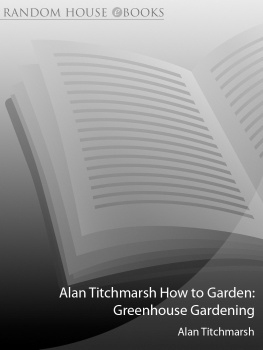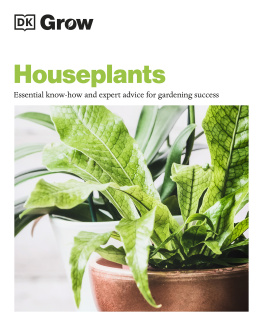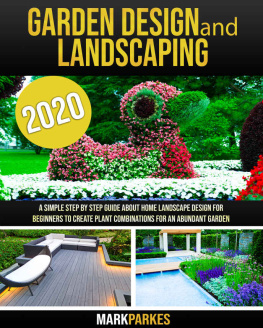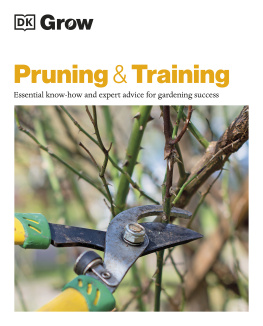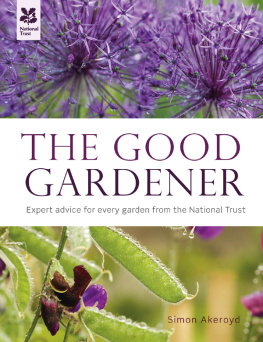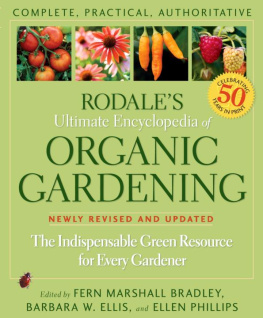BEGINNERS ILLUSTRATED
Guide to
Gardening
Techniques to Help You Get Started
Katie Elzer-Peters

Acknowledgments
My sincere thanks go to Billie Brownell, who helps me see my writing anew every time we talk, and who is a tremendous source of professional support. This book would not exist without her help. I cant say enough about Heather Claus, my designer and friend, who gets in the trenches with me to help me finish all of my crazy projects. I have extreme appreciation for Candace Edwards, the principal photographer, who sweated it out with me on 95-plus degree day photo shoots during a Southern summer. I am indebted to my friends Tracy Hill, Susan Z. Miller, Jon Karschnik, Corey Creswell, Jocelyn Watson, and Jane Davis for use of their yards, modeling talents, and lawn care equipment. Creating a book is like piecing together a big puzzle, and Jenny Peterson, Addy McCulloch, Kylee Baumle, Bill Johnson, Daniel Gasteiger, Rebecca Sweet, Kathy Purdy, Lisa Grimenstein, Lee Reich, Carol Bradford, Yvonne Cunnington, Tina Koral, Mary Ann Newcomer, Barbara Wise, Jo Ellen Meyers Sharp, Dr. Michael Bradley, and many others helped me gather the pieces. Gibsons Accuprint, Pender Pines, Shelton Herb Farm, and The Coastal Roaster are three local businesses that helped greatly with logistics. There arent enough words of thanks for my friends and family who supported me through the frantic period of producing this book. You know who you are! Though I wish I could say it to him again in person, I want to thank Roger Waynick, founder of Cool Springs Press, for believing in me and giving me the opportunity to work with him and his team. And last, but most, I could do nothing without the love and support of Joseph Peters, my husband, friend, and chief garden waterer.
Katie Elzer-Peters
Table of Contents
Preface
Ive been gardening since I could walk, so tending plants is like breathing to me. However, because Ive spent my life helping people learn how to garden, I realize thats not the case for everyone. Whether you pick up this book because youve grown up watching your parents or grandparents grow beautiful flowers and youre ready to try gardening yourself, or because you have just moved into your first house with your first yard that you have to care for, I hope you find what you need to be a successful gardener.
This spring, I bought my sister Emily a garden, and we planted it together. (You can see her hand watering her plants in the How to Care for Perennials section.) I set out the plants and she said, Now what? Do we just dig holes? While working in my friends yard (planting a garden that we photgraphed for this book), I told my friend, You can just go to the store, buy a bunch of plants that all like sun or shade and plant them together, and theyll look good! She said, Well, you can do that, but I cant. Im here to tell you that you actually can do that, and this book will help you learn how.
Just like cooking, painting a room, or assembling a piece of furniture, gardening requires some instructions. But while you might not hesitate to open a cookbook and whip together a new recipe youve never tried before, or begin assembling a computer desk from hundreds of parts, you might be afraid to try growing a new plant or trimming a shrub in your front yard. If so, this book is for you.
I want the information in this book to help you feel confident trying new techniques, growing new plants, and caring for your yard and garden. Plants are a lot tougher than you might think, so look up the project you want to tackle, assemble your materials, and get going. In no time, your thumb will turn green, and your yard will be the envy of your neighbors. And, if you find a plant that likes growing in your garden, buy more of it!
Happy gardening!
Katie
Introduction
Open this book to any sectionHow to Prune a Tree, for exampleand youll have all of the information you need to complete a gardening technique. Each section includes a list of materials, step-by-step instructions or simple instructions for techniques that dont require multiple steps, and photographs illustrating the steps. Even if you dont know much about how to garden, you can read each section, follow the instructions, and learn how to take care of an area of your yard, lawn, or garden.
So, why an introduction?
To transform yourself from someone who mows the lawn and occasionally prunes the shrubs to a gardener with beautiful flower beds and vegetable plots, you need to learn a few basics about how to look at the landscape, where to situate plants around your house so they thrive, how plants grow, and how to find the supplies and extra information you need to be successful. Gardening is a hobby just like fly fishing or sewingafter youve learned the lingo, it is easier to read instructions, find the right supplies, and have fun while doing it. Once youve read this introduction, the information in each chapter will make more sense. Youll have a better understanding of the overall picture.
Now, lets get started!
Learning to See
How can you tell if your plants are healthy? How do you know if your garden is pretty? The first is a matter of learning how plants grow. The second is mostly a matter of personal taste. Its hard to have a pretty garden, though, if you dont understand how plants grow. Thats because plants react to everything you do to them. When you fertilize, prune, or stake a plant, the plant grows a certain way. (Or stops growing, depending on what you do to it!)
A quote by Marcel Proust says, The real voyage of discovery consists not in seeking new landscapes but in having new eyes. There are, in fact, things happening in your yard and garden right now that you might not have even noticed. Once you understand what youre looking at, you will know what to do about it. Much of gardening is in learning how to look at your plants and tell what they need: more sun, more water, more food, more shade, or a trim.
As you tend your garden using the techniques in this book, your plants will become healthier, larger, and more beautiful. You will learn to see the difference between a plant that is barely surviving and one that is thriving, and youll know how to help the plant thats in trouble. Start learning to see by looking around your yard.
Finding Your Way Around the Yard
If you spend much time as a gardener, particularly if you start reading other gardening books and magazines, youll frequently see the phrase right plant, right place. You can save yourself a lot of time and money if you plant plants in areas of the garden with conditions that match growing needs listed on plant tags. For instance, select a sunny spot to plant perennials or annuals that indicate full sun as a growing need on their tags.
Certain types of plants are also better for some areas of the yard than others. For example, if you hear someone talking about foundation plants, theyre talking about plants next to the houseusually smaller shrubs, small trees, perennials, or annuals. An island bed is a landscape bed in the center of a yard, or a bed that doesnt have a driveway, sidewalk, patio, or house on one side of it.
Heres a typical yard, and the landscape features in it:

Next page

